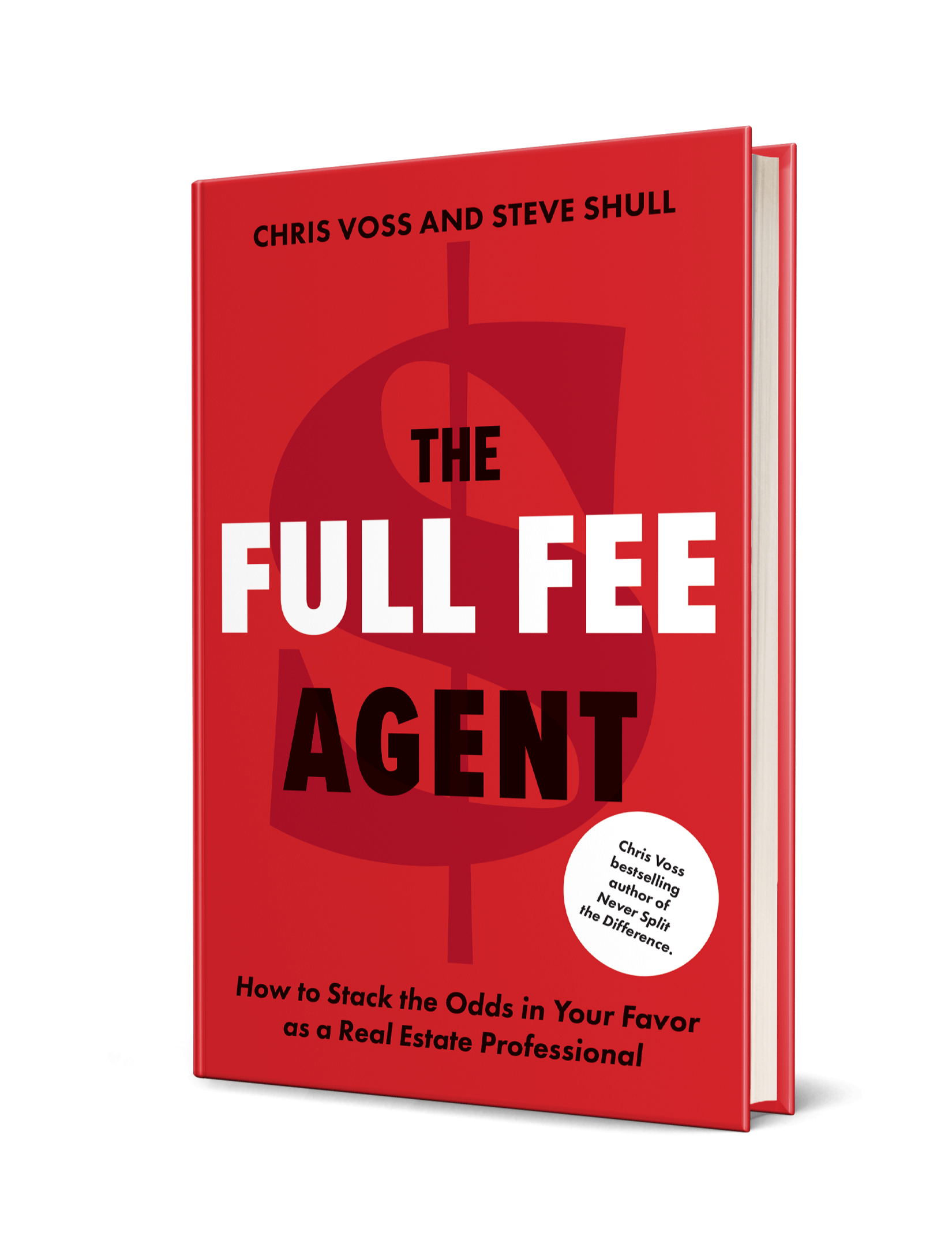How to Avoid the Emotional Pitfalls of Presenting Offers to Sellers
Aug 02, 2024
You’re representing a seller, and you’ve received an offer. Yay! Cue the confetti! 🎉
Not so fast.
The way you present an offer to your client can have a huge impact on how the offer is received and how smoothly the process moves forward, as well as the strength and quality of your relationship.
Remember that every moment with our clients is an opportunity to use Tactical Empathy to strengthen and maintain our rapport and grow our trust-based influence.
Conversely, any time we fail to employ Tactical Empathy is an opportunity to lose that trust.
Don’t get lazy when it comes to presenting offers.
Don’t assume that Tactical Empathy isn’t needed because you’re delivering “good news”—and don’t assume that what you perceive to be good news will be received in the same way.
You are the messenger. It is your client who determines whether that message is a positive or a negative.
Here’s what Tactical Empathy in the offer presentation looks like…
▶️ Get permission to deliver the offer.
First, reach out to your client to find a time to speak:
“Would it be impossible to find 10 minutes to discuss an offer?”
Once on the phone, remember to retain your neutrality.
“You’ve received an offer on the property. Would now be a bad time for me to go through the terms of that offer with you?” (And remember it’s “YOU have received an offer.” Not “WE.” It’s not your property.)
If the client is ready to hear the terms, start out by welcoming their disagreement.
“As I go through the offer terms, if at any point you hear something that sounds like a problem would you mind stopping me and letting me know?”
▶️ If you suspect they’ll like the offer, go ahead and deliver the terms.
Speak LOW and SLOW.
Listen closely, label and mirror their responses. Make sure they feel understood.
If the offer you’ve delivered is in line with your client’s expectations, they seem to have received all the terms positively, and they indicate that they’d like to move forward, wrap up with a summary and make sure they have no unstated concerns before you take the next step in the process. That might sound something like:
“So far you’ve told me that you’re happy with this buyer’s price. You’ve said that you have no problem giving them the financing contingency, as requested, for 75% of the purchase. You’re very pleased that they’re flexible with a later closing date. That seems to be reducing your stress about the move. As a result you feel like these are the buyers you’d like to move forward with. ”
If you get a “That’s right” there may still be value in checking in one more time with a simple, “Are you sure?” Or “Would you like to sleep on it before committing?”
This is especially important if you have any reason at all to feel that the process may be moving too quickly for your client’s comfort. Remember to be both cautious and respectful of the Negotiator Personality Type you’re dealing with: Accommodators can sometimes over-promise and may deliver a false yes. Analysts can appear to agree when they’re really only agreeing to think about it.
▶️ If there’s any chance they won’t like this offer, brace them for bad news before delivering the terms.
When delivering a low offer, or an offer which comes with any other terms to which you have a strong suspicion your client will object, tee it up in the way you would any other piece of ‘bad news’. Start with an accusations audit:
“You’ve received an offer on the property. It may be very disappointing.” (Or “You will be very disappointed” or “You are going to absolutely hate this offer”, depending on the specifics. Use your judgment. What does your gut tell you?)
Deliver that message low and slow, and let it sink in with Dynamic Silence. Wait until they ask before you continue.
Then deliver the terms, again low and slow, and again pausing with Dynamic Silence to give the client the opportunity to weigh in.
▶️ DON’T insert your feelings into the conversation.
If a client has strong feelings about an offer, or about any one particular term, remember the crucial distinction between an empathetic response and a sympathetic response. Your job is to see the world through your client’s eyes and to demonstrate your understanding of their thoughts and feelings (empathy)–NOT to jump into their shoes and feel what they feel (sympathy).
You don’t need to amplify their negative feelings with anything like, “I know, this offer is infuriating. I don’t know what they were thinking. I told the agent you wouldn’t accept it.” (This makes it all about you, and comes off as if you’re making excuses for yourself).
Don’t cheerlead their positive feelings with your own excitement with something like, “Right?! This is so great. So much higher than we expected.” (Again, that’s all about you, and reads like you’re begging for compliments—”Didn’t I do a great job?!”)
Your only job here is to listen deeply and to make your client feel understood. Listen at the highest level, Empathetic Listening, in which you’re listening for their motivation, their perspective, their circumstances, and for what they are not saying.
Let’s look at a specific example.
Let’s say the offer has come in quite a bit lower than your client had hoped, and they are exhibiting displeasure. Use Mirrors, Labels and Dynamic Silence to make your client feel understood and to move the conversation forward. Depending on the specifics, your labels could sound something like:
“I know that number is very upsetting to you.”
“This must be extremely discouraging.”
“It seems like you’re worried that this could be the highest offer you’ll receive.”
“This probably feels very disrespectful.”
“You must be feeling like these buyers are not understanding the value of your home.”
“It sounds like you’re losing confidence in the listing price.”
“It sounds like you might not want to counter these buyers at all.”
When you have successfully labeled your client’s thoughts and feelings and you’ve gotten a “That’s right”, it’s time for the next step.
▶️ Present them with their options for moving forward.
Continuing with the example scenario, you might say something like this:
“You have a decision to make and you have choices: You can accept this offer as is. It doesn’t sound like that’s your preference. You can reject it entirely with no counter-offer. Or you can pass along a counter-offer. How would you like to proceed?”
If your client is interested in presenting a counter-offer, they will often revert to asking you what you think they should do. As I’ve said before, don’t take the bait! Instead, refocus them on expressing their thoughts and feelings:
“It sounds like you’re interested in my guidance on this. I will absolutely give you my thoughts. First, would you be opposed to sharing with me what you think a good idea might be?”
Whatever number they mention will give you an anchor point from which to continue the exploration of their perspective, so that you can best support them in determining their next move.
“It sounds like you’d be happy to move forward with these buyers if they came up to X.” “How would you feel if they only increased their bid to Y?” “If the buyers choose to stay at their current number, what would you want to do in that case?” “If the buyer’s response to the counter-offer is to withdraw completely, how would you feel about that?”
Throughout this conversation, remember who you’re dealing with.
If you have been employing Tactical Empathy throughout the relationship with your client, by the time you’re delivering offers you should have a pretty good sense of how they may react to information. You’ve probably been able to make an educated guess as to which Negotiator Personality Type they are.
Take the time to evaluate the best strategy, and the best language with which to approach the conversation before you pick up the phone. Nothing is gained by rushing in and winging it.
Get free coaching in your inbox every week
Stay focused on what truly matters with key highlights and insights from all our coaching programs.


